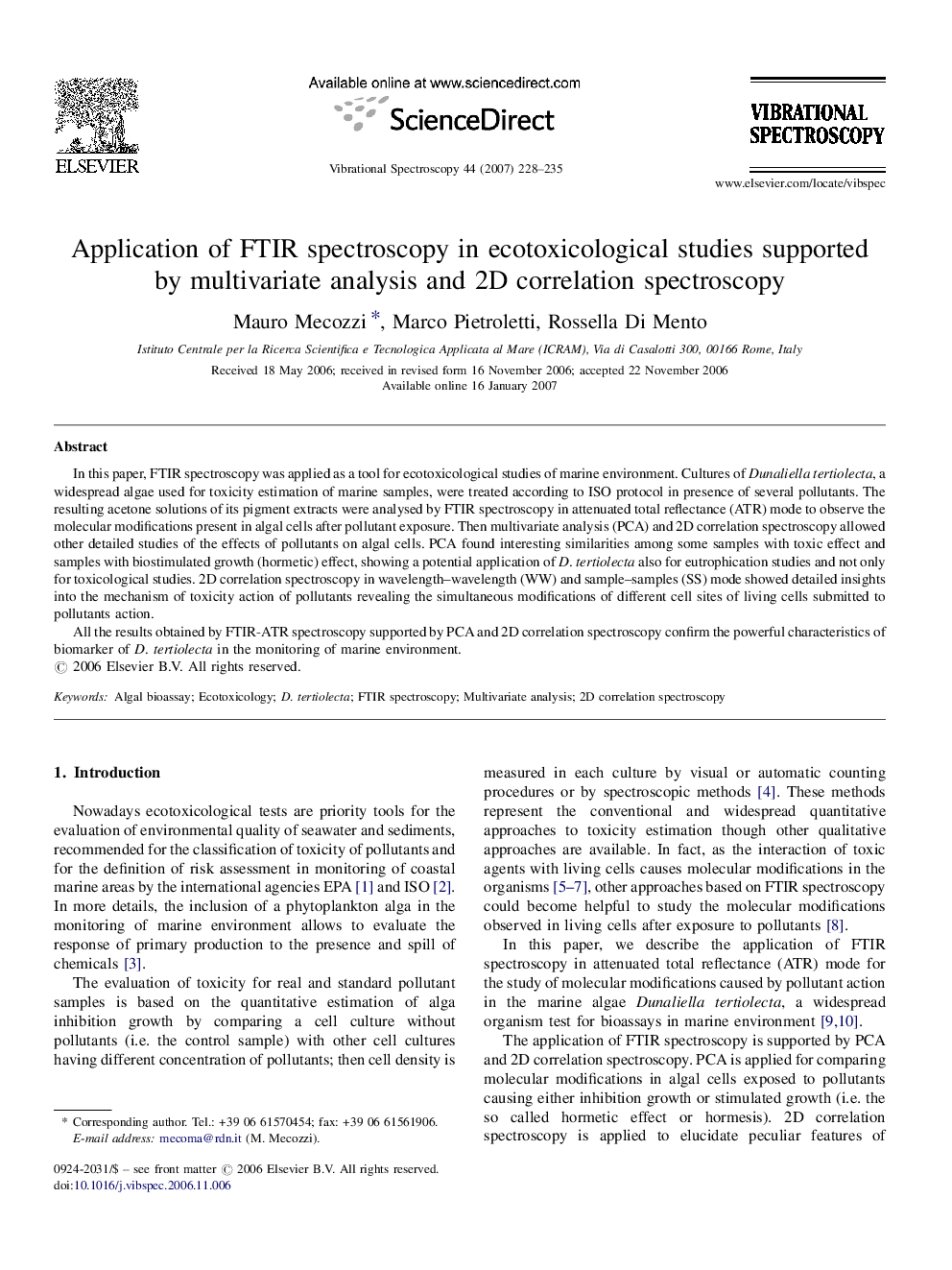| Article ID | Journal | Published Year | Pages | File Type |
|---|---|---|---|---|
| 1249798 | Vibrational Spectroscopy | 2007 | 8 Pages |
In this paper, FTIR spectroscopy was applied as a tool for ecotoxicological studies of marine environment. Cultures of Dunaliella tertiolecta, a widespread algae used for toxicity estimation of marine samples, were treated according to ISO protocol in presence of several pollutants. The resulting acetone solutions of its pigment extracts were analysed by FTIR spectroscopy in attenuated total reflectance (ATR) mode to observe the molecular modifications present in algal cells after pollutant exposure. Then multivariate analysis (PCA) and 2D correlation spectroscopy allowed other detailed studies of the effects of pollutants on algal cells. PCA found interesting similarities among some samples with toxic effect and samples with biostimulated growth (hormetic) effect, showing a potential application of D. tertiolecta also for eutrophication studies and not only for toxicological studies. 2D correlation spectroscopy in wavelength–wavelength (WW) and sample–samples (SS) mode showed detailed insights into the mechanism of toxicity action of pollutants revealing the simultaneous modifications of different cell sites of living cells submitted to pollutants action.All the results obtained by FTIR-ATR spectroscopy supported by PCA and 2D correlation spectroscopy confirm the powerful characteristics of biomarker of D. tertiolecta in the monitoring of marine environment.
